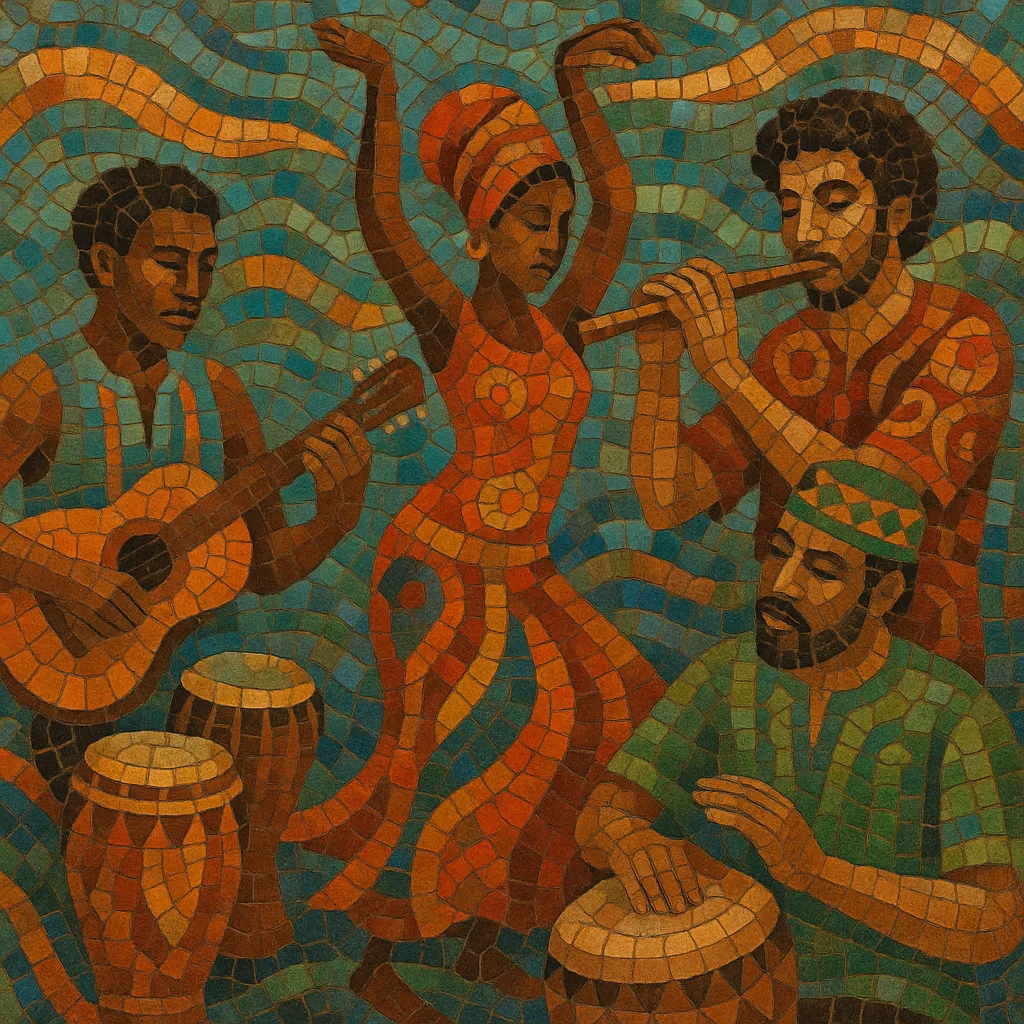Worldbeat is a pop/rock-oriented approach that blends mainstream songwriting, production, and instrumentation with rhythms, timbres, and vocal styles drawn from traditional and popular musics around the world.
Emerging in the 1980s, it was propelled by high-profile collaborations and labels that framed cross-cultural fusions for international radio audiences. Typical tracks combine familiar verse–chorus structures and modern studio polish with polyrhythms, non-Western percussion, distinctive regional scales or modes, and multilingual lyrics, often celebrating cultural exchange.
The term “worldbeat” took shape in the mid-to-late 1980s as pop/rock artists and labels sought a banner for radio-friendly fusions with non‑Western styles. Key catalysts included Peter Gabriel’s WOMAD festival (founded 1982) and Real World Records (launched 1989), Paul Simon’s Graceland (1986) with South African musicians, and David Byrne’s Luaka Bop (est. 1988). In parallel, the UK music industry formalized “world music” as a retail category (1987), creating a commercial context in which worldbeat tracks could thrive on mainstream playlists.
Global hits such as Mory Kanté’s "Yé ké yé ké," Ofra Haza’s Yemenite-infused pop, and Youssou N’Dour’s collaborations showed that African and Middle Eastern aesthetics could work inside Western pop formats. The 1990s expanded the palette further: Deep Forest and Enigma popularized chant- and folk-sampling within downbeat/electronic frameworks; Afro Celt Sound System fused Celtic melodies with West African polyrhythms and club production. These acts positioned worldbeat as both radio-ready and club-compatible.
As global streaming and hybrid local scenes flourished, worldbeat’s ethos permeated pop at large—from multilingual hooks to hand percussion and non-Western modes in chart hits. At the same time, discourse around power balance and cultural appropriation sharpened, pushing artists and labels toward more equitable crediting, collaboration, and context. Worldbeat’s legacy endures in folktronica, tribal house, and many crossover projects, where pop craft meets regional traditions with attention to authenticity and co-creation.
Start with a pop/rock song framework (clear hook, verse–chorus form) and integrate rhythmic, timbral, and linguistic elements from one or more regional traditions. Aim for respectful, collaborative fusion rather than surface-level ornamentation.


